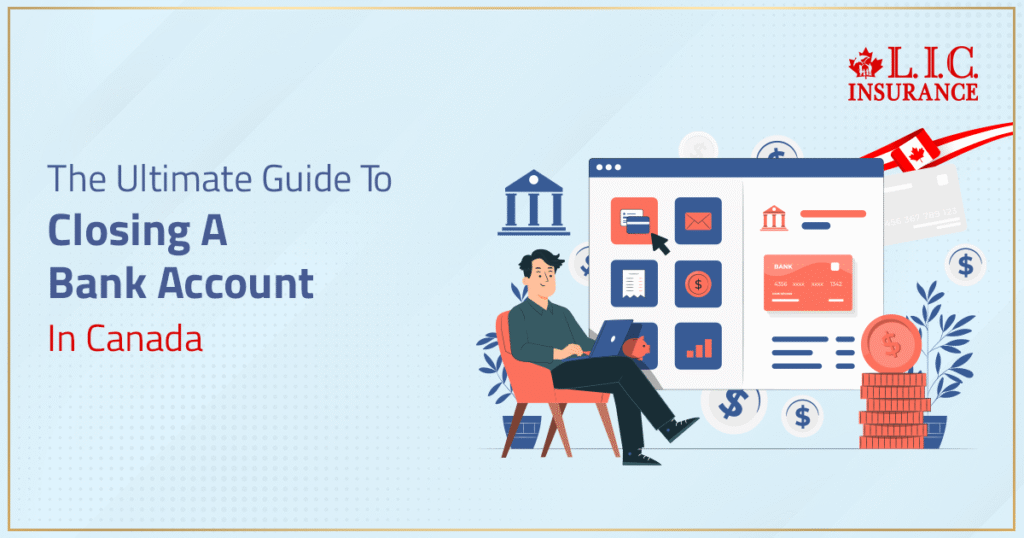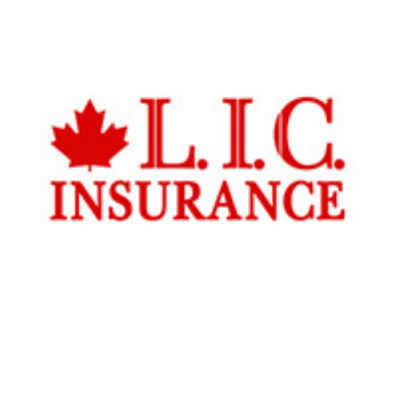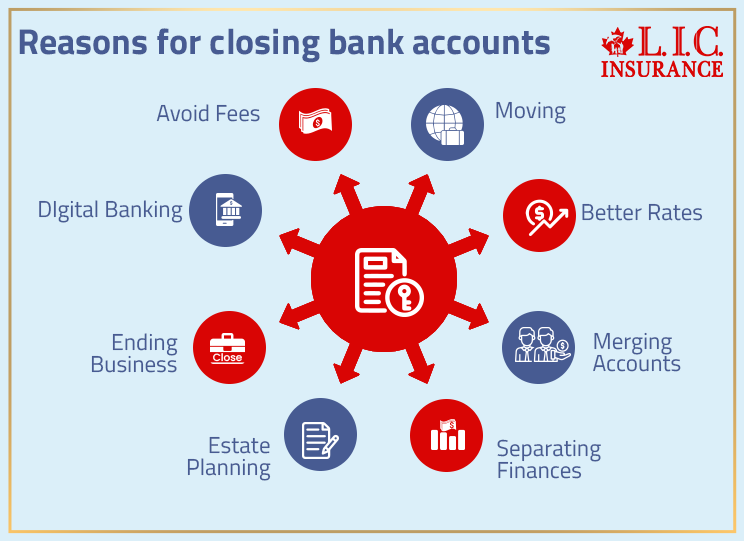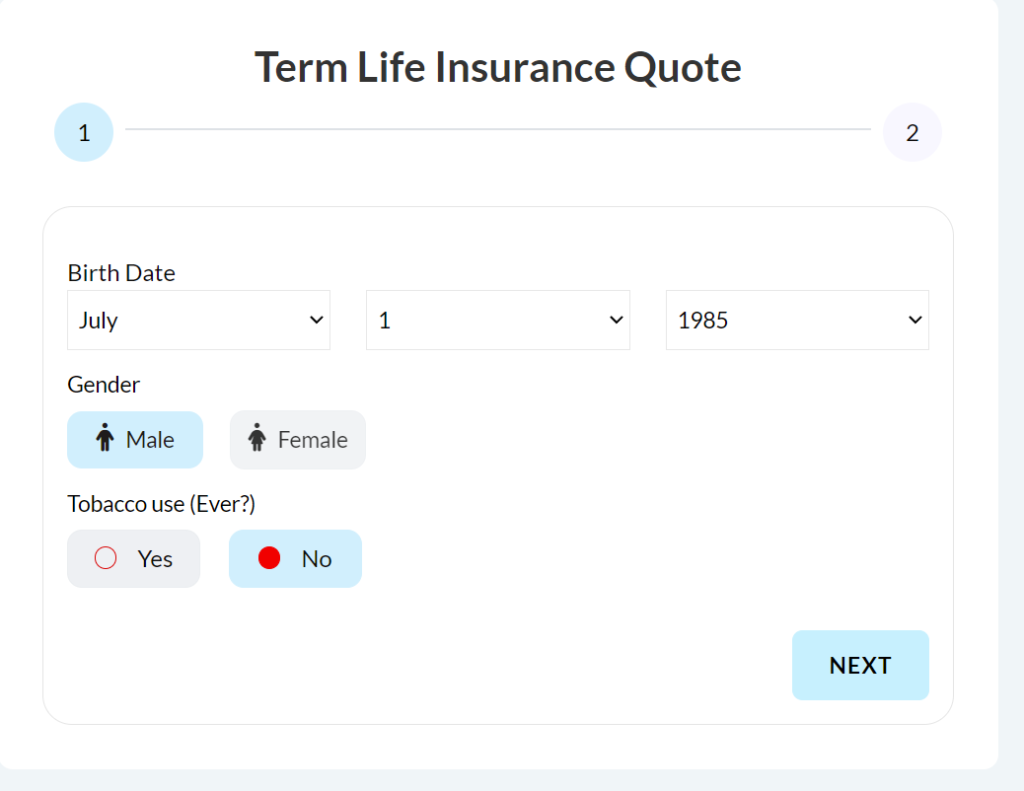- Connect with our licensed Canadian insurance advisors
- Shedule a Call
BASICS
- Is Infinite Banking A Smart Financial Strategy?
- Understanding the Infinite Banking Concept
- Why Infinite Banking Appeals to Canadians Seeking Financial Freedom
- How Infinite Banking Strategy Helps Build Financial Independence
- Challenges and Misconceptions About Infinite Banking
- Who Should Consider Infinite Banking for Financial Freedom?
- How to Start Your Infinite Banking Journey
- Key Advantages of the Infinite Banking Strategy
- A Day-to-Day Struggle: Why More Canadians Are Exploring Infinite Banking
- Potential Drawbacks You Should Know
- The Future of Infinite Banking in Canada
- Is Infinite Banking a Smart Financial Strategy?
COMMON INQUIRIES
- Can I Have Both Short-Term and Long-Term Disability Insurance?
- Should Both Husband and Wife Get Term Life Insurance?
- Can I Change Beneficiaries on My Canadian Term Life Policy?
- What Does Term Life Insurance Cover and Not Cover?
- Does Term Insurance Cover Death?
- What are the advantages of Short-Term Life Insurance?
- Which Is Better, Whole Life Or Term Life Insurance?
- Do Term Life Insurance Rates Go Up?
- Is Term Insurance Better Than a Money Back Policy?
- What’s the Longest Term Life Insurance You Can Get?
- Which is better, Short-Term or Long-Term Insurance? Making the Right Choice
IN THIS ARTICLE
- What is the minimum income for Term Insurance?
- How Does Income Affect Your Term Life Insurance Policy?
- Can You Buy Term Life Insurance Online with a Low Income?
- How Can You Lower Your Term Life Insurance Cost?
- How Much Term Life Insurance Do You Need?
- Can Your Term Life Insurance Policy Be Adjusted Over Time?
- Why Term Life Insurance Is Ideal for Lower-Income Canadians
- Final Thoughts
- More on Term Life Insurance
The Ultimate Guide To Closing A Bank Account In Canada


By Harpreet Puri
CEO & Founder
- 12 min read
- June 4th, 2025
SUMMARY
Closing a bank account in Canada involves more than just withdrawing funds. Steps include cancelling auto-payments, updating CRA, and securing insurance-linked payments. The content also explains how loan protection insurance plans, loan protection insurance coverage, and loan protection insurance costs can be affected during the account closure process, especially for those managing financial transitions or facing hardship.
Introduction
"I thought it'd be simple — but they made me jump through hoops."
That’s what a client recently shared with Mia, one of our trusted advisors at Canadian LIC. All she wanted to do was close her bank account after switching to a new institution — yet what should’ve been a straightforward process quickly turned into long phone holds, lost paperwork, and surprise charges.
If you’re reading this, you’ve probably been in a similar situation, or you’re planning to close your Canadian bank account soon and want to do it properly.
Whether you’re:
- An immigrant heading back home after their stay in Canada
- A permanent resident switching banks
- A business owner shutting down an old business account
- Or someone simplifying your financial life after a big life change (marriage, separation, retirement)
…this ultimate guide will walk you through exactly how to close a bank account in Canada — safely, securely, and without leaving money (or problems) behind.
Why People Close Bank Accounts in Canada
At Canadian LIC, we see people closing accounts for all kinds of reasons. Here are the most common:
- Moving to another province or country
- Changing banks for better rates or customer service
- Merging accounts after marriage
- Separating finances after divorce
- Downsizing the number of accounts for estate planning
- Ending business operations
- Switching to digital banks or credit unions
- Avoiding monthly fees

No matter the reason, what matters is doing it right, because if you don’t, you could end up with:
- Missed direct deposit or bill payments
- NSF fees
- Credit score impacts
- Unclaimed balances
- Tax reporting issues (especially for non-residents or expats)
Step-by-Step: How to Close a Canadian Bank Account
- Step 1: Review the Account Terms
Before anything, log in or call your bank and review your account’s closure policy.
Watch for:
- Required notice period (some accounts need 30 days)
- Minimum balance to avoid closure fees
- Outstanding charges or negative balances
- Account types with investment or registered status (like RRSP savings accounts)
Pro tip from Mia at Canadian LIC:
“Don’t rush to close without reviewing your final monthly statement. Some clients forget annual fees or pending auto-renewals.”
- Step 2: Transfer Out Remaining Funds
Once you’ve cleared the account:
- Transfer the full balance to your new account
- Avoid transferring the full amount if fees are pending — leave a $10–$20 buffer
- If closing in person, request a bank draft or certified cheque
Be sure to update your employer, government agencies (CRA, CPP, GST/HST, etc.), and anyone else depositing money into that account.
- Step 3: Cancel Pre-Authorized Payments and Deposits
This is where many Canadians run into trouble.
Before closing your account:
- List every subscription, bill, auto-payment, and deposit connected to the account
- Update your new account info with each one (utilities, insurance, streaming services, etc.)
- Allow at least one full billing cycle to confirm all changes went through
We advise our clients to use a 60-day buffer:
Keep both accounts open during that time to catch missed payments or income sources.
- Step 4: Close In Person (If Possible)
Yes, many banks allow online closures, but closing in person or over the phone is safer.
When you close:
- Request written confirmation of account closure
- Confirm that the account is fully inactive and won’t trigger maintenance fees
- Ask about tax slips (T5S, RRSP contributions, etc.) that may still be issued
If you’re abroad or unable to visit in person:
- Contact your bank’s customer service or international desk
Some institutions require signed forms, scanned ID, or notarized letters
- Step 5: Follow Up 30–60 Days Later
Closing the account doesn’t mean it’s gone forever.
We’ve seen cases where:
- Dormant accounts get reactivated by surprise e-transfers
- Government cheques arrive months after account closure
- An unprocessed auto-debit triggers NSF fees or overdraft
Set a calendar reminder to follow up with your bank 30 days after closure. Also:
- Ensure your final account statement shows a $0 balance
Watch for mail or email notifications related to account activity
Special Situations: What If…
You’re Closing an Account for Someone Deceased?
This requires additional documentation:
- Original or certified copy of death certificate
- Executor ID and proof of authority (e.g., will, probate)
- Bank-specific estate closure forms
At Canadian LIC, we help families coordinate with banks and insurance companies, especially if the account was tied to a life insurance or investment payout.
You’re a Newcomer Returning Home?
International students or temporary workers often leave Canada without closing accounts properly. This leads to:
- Dormant accounts
- Unused balances
- CRA notices or tax confusion
Before leaving Canada:
- Close or convert your bank account to a non-resident format
- Provide your overseas address
- Cancel any insurance or investment products you no longer need
- Review your international student insurance coverage, RESP or TFSA status, and whether you need to file a tax return
Canadian LIC has helped many international clients navigate this, especially those with linked insurance or registered account balances.
You’re Closing a Business Account?
For sole proprietors or corporations:
- Ensure all cheques have cleared
- Pay off any merchant fees or GST/HST owing
- Download a full year of statements for CRA audit purposes
- Notify your accountant or bookkeeper of the closure
Also, confirm that your business loan, line of credit, or credit card accounts are closed separately.
Canadian LIC's Perspective: Why This Matters More Than You Think
Too often, we see clients rushing through financial transitions.
They close accounts fast, but overlook:
- Direct deposit updates
- Tied insurance policies
- Investment-linked savings accounts
- Identity fraud risk if the paperwork is left incomplete
At Canadian LIC, we don’t just handle insurance. We help clients structure their entire financial picture — and that includes making sure no account closure leaves them vulnerable.
“One of my clients lost a $1,300 CRA refund because she didn’t update her account with them after closing her TD account,” Mia shared.
“It took her six months to track it down.”
That’s why we walk our clients through a custom closure checklist — especially when they’re also updating their life insurance, disability coverage, or retirement plans.
Pro Tips from Canadian LIC's Advisors
Check if your insurance premiums are auto-debited. If so, update the bank info with your insurer to avoid lapses in coverage.
Watch for TFSA or RRSP account closures. Registered accounts have special rules and may cause tax issues if closed improperly.
Freeze the account before full closure if fraud is suspected. This prevents unexpected withdrawals during the closure window.
The Right Way to Close a Bank Account in Canada — Without Regret
Here’s a recap of what to do:
Your 8-Step Account Closure Checklist
- Review account terms and closure requirements
- Transfer remaining funds, leaving room for fees
- Cancel all direct deposits and auto-payments
- Confirm CRA, Service Canada, and the employer have new info
- Request closure confirmation in writing
- Save final statements and tax slips
- Follow up 30–60 days later
- Update linked insurance, investments, or benefits
How Canadian LIC Can Support You
As a full-service financial brokerage, Canadian LIC doesn’t just offer life insurance and investment products — we provide guidance for the financial moments that matter, like:
- Merging or separating finances
- Preparing to retire
- Leaving Canada permanently
- Winding down a business
- Settling an estate
And if your bank account is linked to loan protection insurance, income replacement plans, or savings strategies, we make sure nothing falls through the cracks when you close it.
Final Word: It's Just a Bank Account — But It's Also a Gateway
It’s tempting to treat account closure as a formality. But it’s more than that.
It’s a step that, when handled carelessly, leads to:
- Lost money
- Missed payments
- Lapsed insurance
- Delayed tax refunds
- Even legal complications
Handled properly, though, it becomes a powerful reset — a sign that your finances are getting stronger, clearer, and more intentional.
At Canadian LIC, we’re ready to help you close it right, structure what’s next, and protect what matters most.

Frequently Asked Questions — Closing a Bank Account in Canada
In many cases, you can close it online, especially with newer digital banks. But at Canadian LIC, we always recommend closing in person or over the phone if possible. Why? We’ve seen cases where clients thought the account was closed, but a forgotten auto-payment reactivated it, and suddenly, they were hit with fees. Always ask for written confirmation, no matter which method you use.
Yes — leave a small buffer, especially if you’re not 100% sure all charges have cleared. Mia often tells clients to keep $10–$25 in the account until the very end. If there’s a hidden annual fee, inactive account charge, or delayed payment, that buffer could save you from a surprise NSF penalty.
If you miss this step, you could:
- Miss a paycheck
- Trigger NSF fees
- Damage your credit
- Have insurance premiums go unpaid and policies lapse
At Canadian LIC, we help clients track and update every link to their account before closing it. We even include this in our financial transition checklist when clients are adjusting coverage or switching banks.
Some banks charge fees if:
- You closed the account too soon after opening
- You have pending charges
- You don’t follow the proper closure process
Check your bank’s terms or call them first. We’ve seen clients charged $25 just for closing too early — and they didn’t even know the fee existed.
Yes, you can still close your account, but the process depends on the bank. Some may:
- Ask for a signed form and scanned ID
- Require you to call their international service line
- Send you documents via email to complete and return
Our advisors at Canadian LIC help international students and returning expats handle this smoothly, especially if the account is tied to other products like RESP or insurance.
Not directly. But if the closed account was linked to:
- GST/HST refunds
- Child benefit payments
- Tax refunds
- RRSP or TFSA contributions
… you’ll need to update your banking info with CRA through My Account. If you don’t, cheques or direct deposits could bounce, and you’ll be left chasing funds. We always remind clients of this when they update financial records through Canadian LIC.
You’ll need:
- The death certificate
- Legal proof that you’re the executor or estate representative
- Possibly a copy of the will or probate documents
We often support families through this process, especially when there are life insurance benefits, RESP/TFSA transfers, or estate taxes involved. Closing accounts is just one part — and it needs to be handled with care and proper documentation.
Not always. Some banks fully deactivate the account number and wipe transaction history once it’s closed. If you want to bank with them again, start from scratch. That’s why we advise clients to wait at least 60 days after transferring all services before fully closing the account.
Before closing:
- Contact your insurance provider (or us at Canadian LIC)
- Update your banking info
- Confirm the next premium date so nothing is missed
We’ve seen clients lose critical illness or disability coverage simply because the bank account changed and the payment failed. That’s why insurance-linked account closures require extra attention — and why we walk clients through it step-by-step.
Key Takeaways
- Closing a bank account isn’t instant — review account terms, leave a fee buffer, and confirm cancellation of all linked services before proceeding.
- Transfer all direct deposits and auto-payments to your new account before closure to avoid missed income, NSF fees, or insurance policy lapses.
- Request written confirmation from your bank once the account is closed — and follow up within 30–60 days to ensure no activity has occurred post-closure.
- Clients with loan protection insurance plans must update their premium payment details to prevent unintentional cancellation of critical coverage.
- If you’re an international student, immigrant, or non-resident, close or convert the account properly to avoid tax slips, dormant balances, or government cheque issues.
- Estate accounts and deceased individuals’ banking details require legal documentation; Canadian LIC helps families through every financial step during this transition.
- Accounts tied to loan protection insurance coverage, registered plans (RRSP, TFSA), or RESP savings need extra attention to avoid penalties or future tax complications.
- Canadian LIC assists clients with structured account closure checklists, helping them avoid overlooked payments, CRA problems, or insurance gaps during financial change.
Sources and Further Reading
- MoneySense: How to Close a Bank Account (Video & Guide)
- Rates.ca: Closing Your Personal Bank Account — What You Should Know
- Financial Consumer Agency of Canada (FCAC): Main Website
- FCAC: Unclaimed Bank Balances
- Wise: Closing an RBC Account — Step-by-Step Guide
- Rates.fm: How to Close a TD Bank Account
These sources provide official guidance, practical tips, and institution-specific instructions to help with closing a bank account in Canada.
Feedback Questionnaire:
We’d love to hear about your experience. Your answers will help us improve how we guide Canadians through financial transitions, especially those that seem “simple” but turn out complicated.
Thank you for sharing your experience. One of our trusted advisors may reach out if you’ve asked for help. We’re here to make financial transitions smoother, one step at a time.
IN THIS ARTICLE
- The Ultimate Guide To Closing A Bank Account In Canada
- Why People Close Bank Accounts in Canada
- Step-by-Step: How to Close a Canadian Bank Account
- Special Situations: What If
- Canadian LIC's Perspective: Why This Matters More Than You Think
- Pro Tips from Canadian LIC's Advisors
- The Right Way to Close a Bank Account in Canada — Without Regret
- How Canadian LIC Can Support You
- Final Word: It's Just a Bank Account — But It's Also a Gateway
Sign-in to CanadianLIC
Verify OTP

